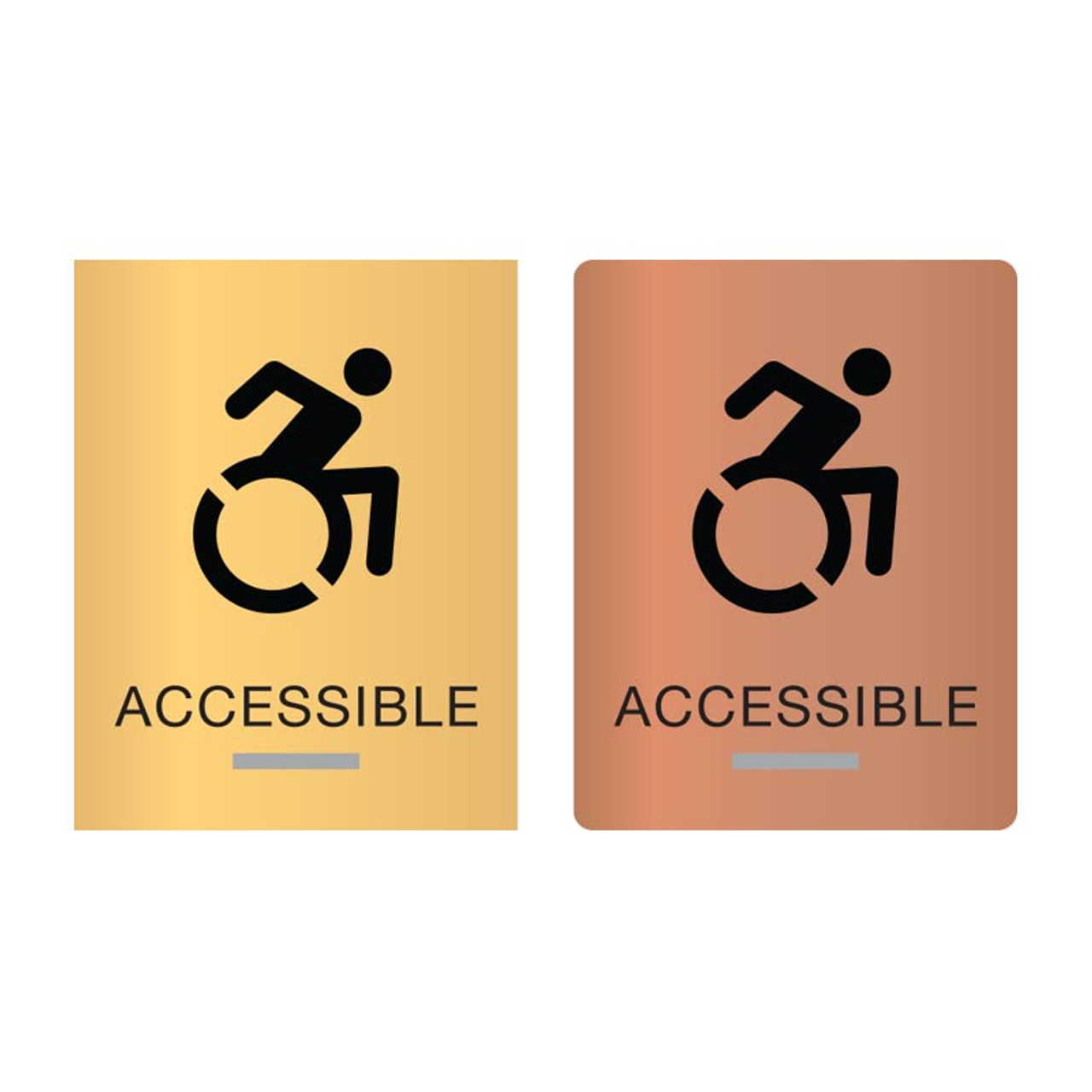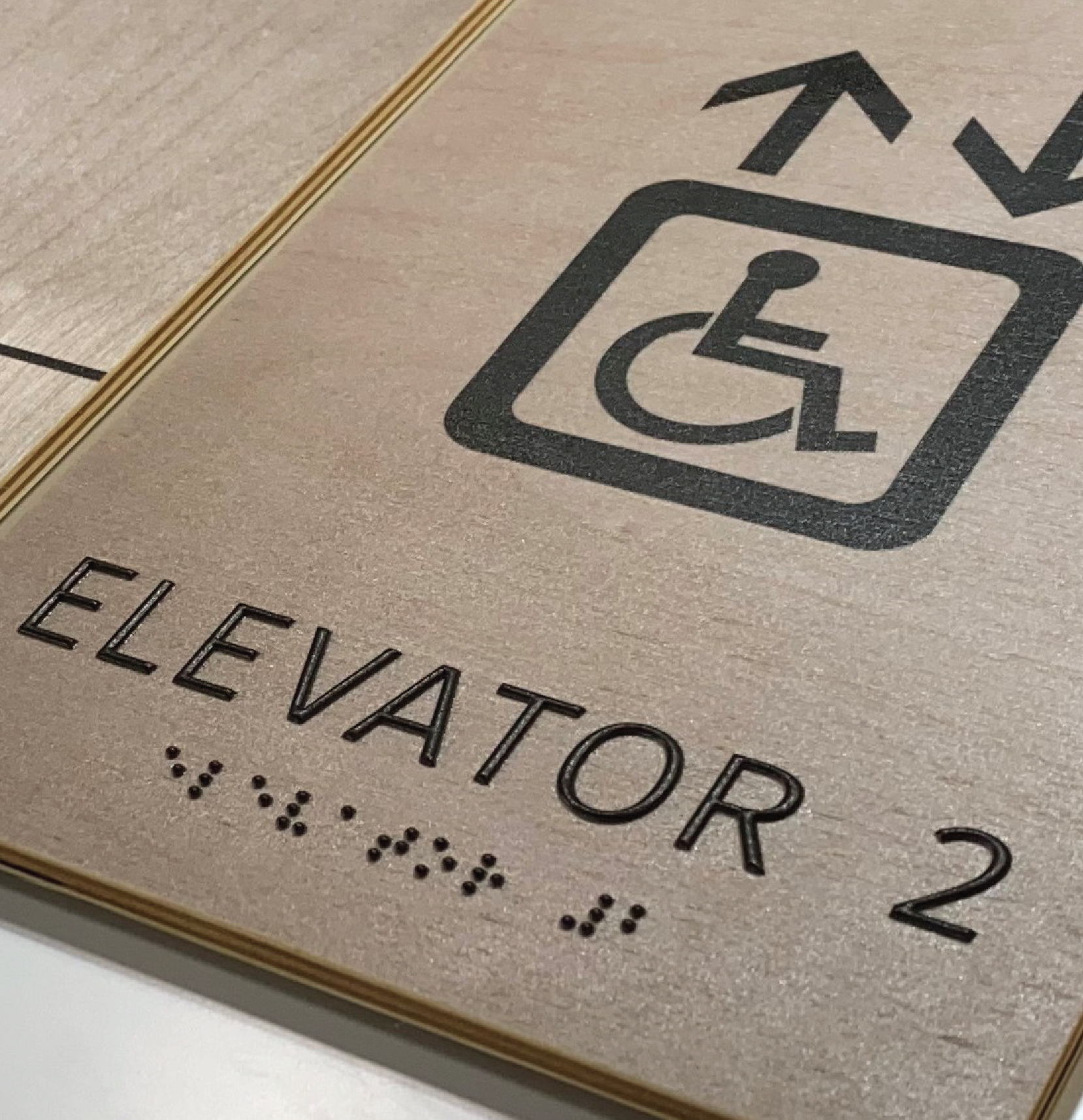Recognizing the Rules Behind ADA Signs
Recognizing the Rules Behind ADA Signs
Blog Article
Checking Out the Secret Features of ADA Indications for Enhanced Ease Of Access
In the world of accessibility, ADA indications act as quiet yet powerful allies, making certain that rooms are inclusive and accessible for people with disabilities. By incorporating Braille and tactile aspects, these signs break obstacles for the visually damaged, while high-contrast color pattern and understandable typefaces deal with diverse aesthetic demands. Additionally, their strategic placement is not approximate but rather a calculated effort to promote seamless navigating. Beyond these attributes lies a deeper story about the advancement of inclusivity and the continuous commitment to creating fair rooms. What extra could these indicators indicate in our quest of universal availability?
Value of ADA Conformity
Ensuring conformity with the Americans with Disabilities Act (ADA) is vital for fostering inclusivity and equivalent accessibility in public spaces and work environments. The ADA, passed in 1990, mandates that all public centers, companies, and transportation solutions fit individuals with handicaps, ensuring they take pleasure in the same legal rights and possibilities as others. Compliance with ADA standards not only fulfills legal obligations however additionally improves an organization's reputation by demonstrating its dedication to variety and inclusivity.
One of the key aspects of ADA compliance is the implementation of easily accessible signage. ADA indicators are designed to make certain that individuals with handicaps can easily browse via buildings and spaces. These indicators need to adhere to particular standards regarding size, font, shade contrast, and placement to assure presence and readability for all. Properly applied ADA signs assists remove barriers that individuals with specials needs usually run into, thereby advertising their freedom and confidence (ADA Signs).
Furthermore, adhering to ADA guidelines can alleviate the threat of legal repercussions and prospective fines. Organizations that stop working to abide by ADA guidelines may deal with lawsuits or penalties, which can be both financially difficult and destructive to their public picture. Therefore, ADA conformity is integral to fostering an equitable atmosphere for everyone.
Braille and Tactile Components
The unification of Braille and responsive aspects into ADA signs symbolizes the principles of availability and inclusivity. These attributes are critical for people who are visually damaged or blind, allowing them to browse public spaces with better freedom and confidence. Braille, a responsive writing system, is essential in supplying written info in a layout that can be conveniently regarded via touch. It is commonly put beneath the equivalent message on signage to make sure that people can access the info without aesthetic assistance.
Tactile components extend past Braille and include raised symbols and personalities. These parts are made to be noticeable by touch, enabling people to determine room numbers, bathrooms, departures, and various other essential locations. The ADA establishes specific standards pertaining to the size, spacing, and placement of these responsive components to optimize readability and make certain uniformity throughout different environments.

High-Contrast Shade Schemes
High-contrast shade systems play a pivotal duty in improving the exposure and readability of ADA signage for people with aesthetic impairments. These systems are crucial as they take full advantage of the distinction in light reflectance in between text and history, guaranteeing that signs are easily discernible, also from a distance. The Americans with Disabilities Act (ADA) mandates making use of details shade contrasts to fit those with limited vision, making it a critical facet of conformity.
The efficacy of high-contrast colors exists in their webpage capacity to stick out in different illumination problems, including poorly lit environments and areas with glow. Normally, dark text on a light background or light message on a dark history is employed to attain optimal contrast. For example, black text on a white or yellow history offers a plain visual distinction that assists in fast recognition and comprehension.

Legible Fonts and Text Dimension
When taking into consideration the design of ADA signage, the choice of legible fonts and appropriate message dimension can not be overemphasized. The Americans with Disabilities Act (ADA) mandates that font styles have to be sans-serif and not italic, oblique, script, highly ornamental, or of unusual type.
The size of the message likewise plays an essential role in availability. According to ADA guidelines, the minimal text height ought to be 5/8 inch, and it must increase proportionally with viewing range. This is especially important in public spaces where signage needs to be checked out swiftly and precisely. Uniformity in text dimension adds to a cohesive visual experience, assisting people in browsing settings successfully.
Furthermore, spacing in between lines and letters is essential to legibility. Ample spacing avoids characters from showing up crowded, boosting readability. By sticking to these standards, developers can significantly enhance ease of access, ensuring that signs offers its designated objective pop over to this web-site for all people, despite their aesthetic capabilities.
Effective Placement Approaches
Strategic placement of ADA signs is important for making the most of access and guaranteeing conformity with legal standards. Effectively located indications direct people with handicaps efficiently, helping with navigation in public rooms. Key considerations include exposure, proximity, and height. ADA standards stipulate that indications ought to be placed at an elevation in between 48 to 60 inches from the ground to guarantee they are within the line of sight click here for more for both standing and seated people. This common elevation variety is vital for inclusivity, making it possible for mobility device individuals and individuals of differing heights to accessibility information effortlessly.
In addition, indicators have to be placed beside the latch side of doors to allow very easy identification prior to entrance. This positioning aids people find spaces and spaces without obstruction. In instances where there is no door, signs ought to be situated on the nearest surrounding wall surface. Uniformity in sign placement throughout a center improves predictability, minimizing complication and boosting overall user experience.

Conclusion
ADA signs play a vital function in advertising access by integrating attributes that resolve the needs of people with impairments. Including Braille and tactile components makes sure vital info comes to the aesthetically damaged, while high-contrast color pattern and legible sans-serif typefaces boost visibility across different lighting conditions. Effective placement techniques, such as ideal mounting elevations and strategic locations, better help with navigating. These elements collectively foster an inclusive setting, highlighting the relevance of ADA compliance in ensuring equal gain access to for all.
In the world of ease of access, ADA indications serve as silent yet effective allies, making sure that areas are inclusive and accessible for people with handicaps. The ADA, passed in 1990, mandates that all public centers, employers, and transportation solutions suit individuals with handicaps, ensuring they appreciate the exact same civil liberties and chances as others. ADA Signs. ADA indicators are developed to guarantee that people with handicaps can quickly navigate through spaces and structures. ADA standards specify that signs ought to be placed at a height between 48 to 60 inches from the ground to guarantee they are within the line of view for both standing and seated people.ADA indications play a crucial duty in promoting ease of access by integrating features that deal with the demands of individuals with handicaps
Report this page